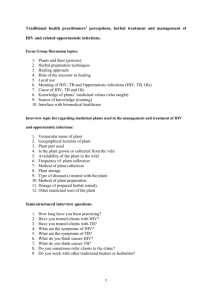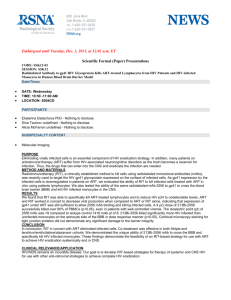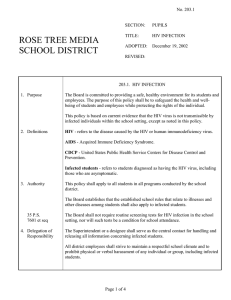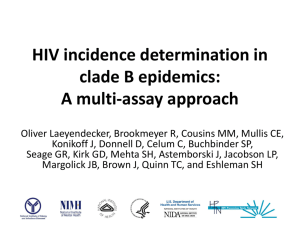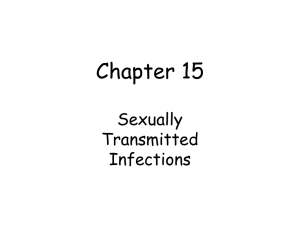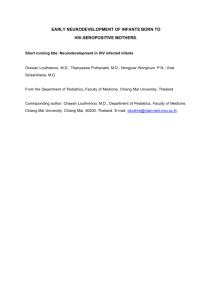FRESH Tools for Effective School Health First Edition 2004 http
advertisement
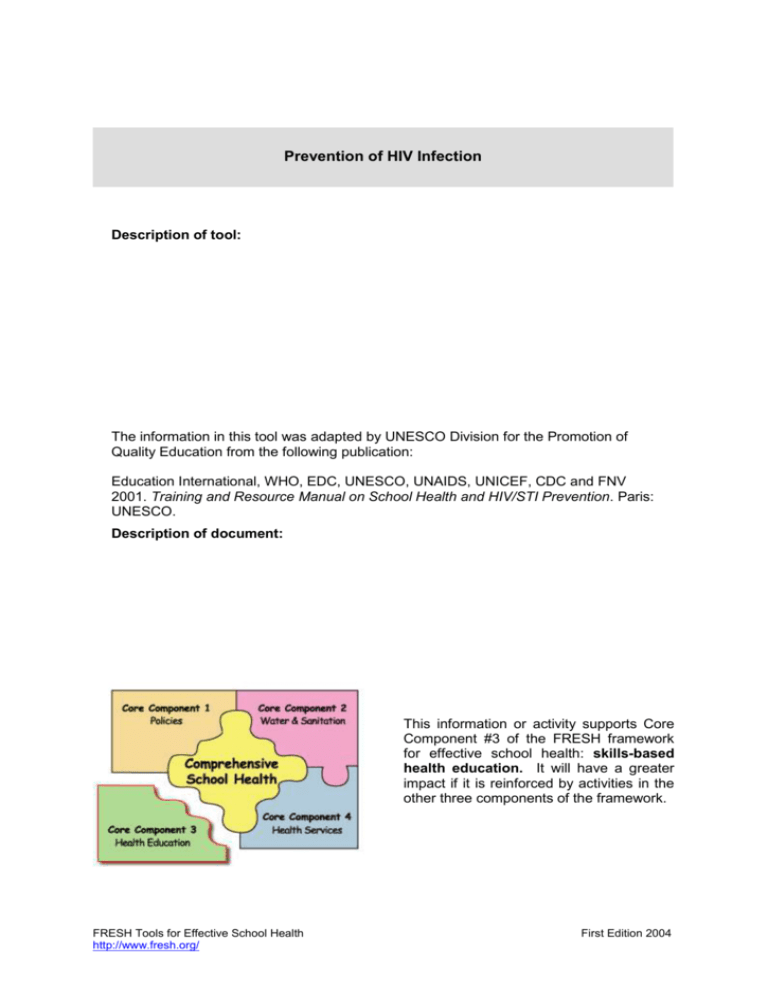
Prevention of HIV Infection Description of tool: The information in this tool was adapted by UNESCO Division for the Promotion of Quality Education from the following publication: Education International, WHO, EDC, UNESCO, UNAIDS, UNICEF, CDC and FNV 2001. Training and Resource Manual on School Health and HIV/STI Prevention. Paris: UNESCO. Description of document: This information or activity supports Core Component #3 of the FRESH framework for effective school health: skills-based health education. It will have a greater impact if it is reinforced by activities in the other three components of the framework. FRESH Tools for Effective School Health http://www.fresh.org/ First Edition 2004 Prevention of HIV Infection1 The only sure way to prevent HIV infection is to avoid coming into contact with the fluids which contain HIV in sufficient quantity to cause infection: blood, semen (and preejaculate), vaginal secretions and breastmilk.* For most people, that means:** Not having sex with an HIV-infected person; and/or Not sharing needles with an HIV-infected person. Because most people who are infected with HIV have few or no symptoms for an extended period of time, you cannot tell if someone is infected just by looking at him/her, and many HIV-positive persons do not know they are infected. The following are prevention measures relevant to personal sex practices and injecting drug use: 1. To prevent sexual transmission of HIV, abstain from sex with any person whose HIVstatus is uncertain. 2. Ask about the sexual history of current and future sex partners. 3. Practise abstinence or fidelity to one uninfected partner. Reducing the number of sex partners also reduces the risk of HIV infection. 4. Always use a condom from start to finish during any type of sex (vaginal, anal, and oral). Use latex condoms rather than natural membrane condoms. If used properly, latex condoms offer significant protection against sexually transmitted disease agents, including HIV. 5. Use only water-based lubricants. Do not use saliva or oil-based lubricants such as petroleum jelly or vegetable shortening. If you decide to use a spermicide along with a condom, it is preferable to use spermicide in the vagina according to manufacturer's instructions. 6. Avoid anal or rough vaginal intercourse. Do not do anything that could tear the skin or moist lining of the genitals, anus, or mouth and cause bleeding. 7. Avoid deep, wet, or "French" kissing with an infected person. Possible trauma to the mouth may occur, which could result in the exchange of blood. It is safe, however, to hug, cuddle, rub, or dry kiss your partner. 8. Avoid alcohol and illicit drugs. Alcohol and drugs can impair your immune system and your judgement. If you use drugs, do not share "injecting drug works." Do not share needles, syringes, or cookers. 9. Do not share personal items such as toothbrushes, razors, and devices used during sex which may be contaminated with blood, semen, or vaginal fluids. 10. If you know you are infected with HIV or have engaged in sex or needlesharing behaviours that lead to infection with HIV, do not donate blood, plasma, sperm, body organs, or tissues. Inform potential sex partners of your seropositive status and do not share personal items (as above) or druginjecting equipment with others. 1 * Other body fluids, such as sweat, saliva, tears, etc. may contain small amounts of the virus, but NOT in sufficient quantity to cause another to be infected, UNLESS such fluids also contain blood. ** People who live in countries where the blood supply is not rigorously screened for transfusiontransmissible diseases including HIV, are also at risk of infection through blood (or blood product) transfusions, and must weigh the risk of transfusions accordingly. 1 Adapted from Education International, WHO, EDC, UNESCO, UNAIDS, UNICEF, CDC and FNV 2001. Training and Resource Manual on School Health and HIV/STI Prevention. Paris: UNESCO. 2





